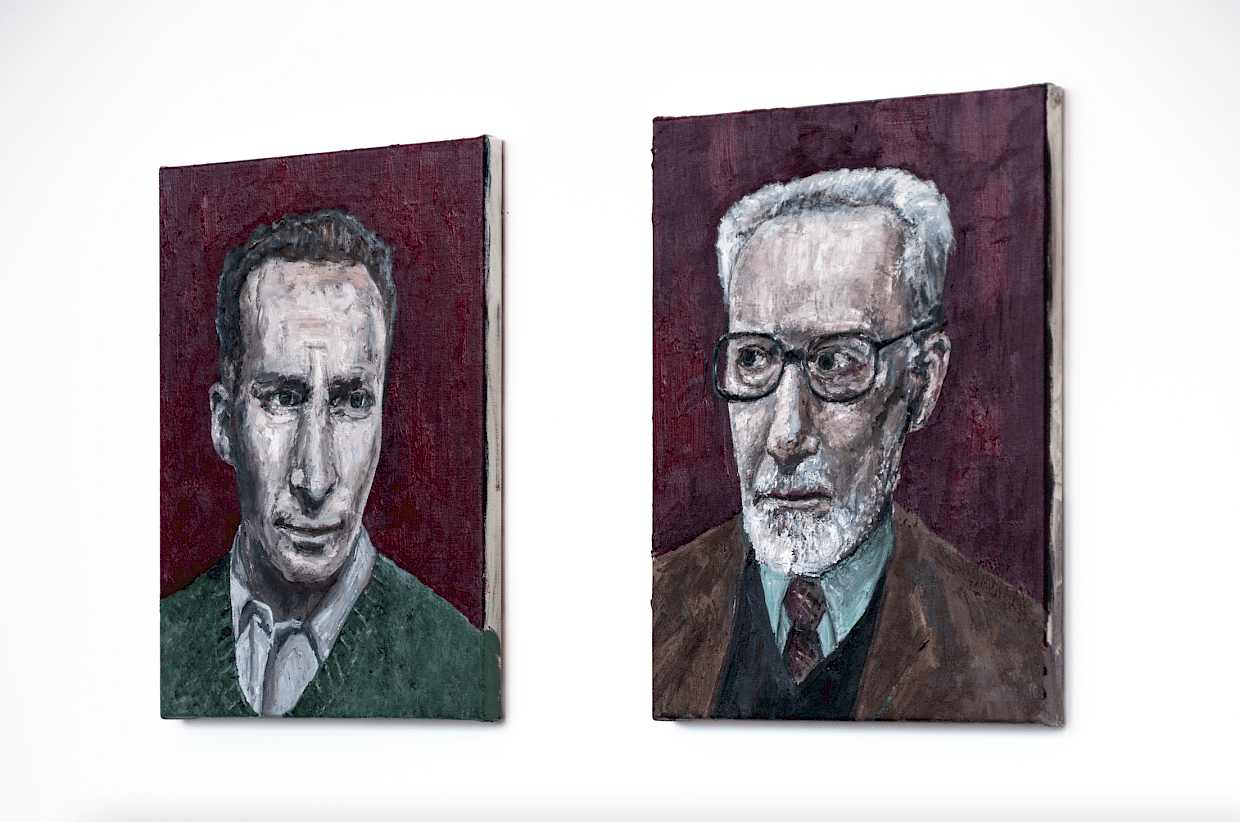

Ronald Ophuis (b. 1968)
Primo Levi, a short time after WWII & Primo Levi, a short time before his suicide

The themes of Ronald Ophuis’s art are rarely easy to digest. He experienced his breakthrough and made a name for himselfin the late 1990s with raw Auschwitz scenes that were widely publicised and hotly debated in the press. Ophuis often travels to (former) war zones and, as a painter, he’s a chronicler of war. Even his “softest” paintings are often based on painful stories. Ophuis has been painting beautiful flowers and shrubs ever since he travelled to Srebrenica. He decided to paint floral still lifes after he spoke to forensic biologists there, who were able to locate mass graves based on certain types of vegetation.
In many of his paintings, Ophuis was guided by the literary descriptions of inhumane conditions by Italian writer and camp survivor Primo Levi (1919-1987). Levi’s world-famous books If this is a Man and The Auschwitz Trilogy have been published in dozens of languages and remain a source for references and quotations whenever the Holocaust is being commemorated. Levi narrates, among other things, the absurd hike back to his hometown Turin after Auschwitz was freed by the Red Army. Plays were performed to keep up the courage or sometimes simply in exchange for food. Life has to go on. Levi’s books are a testimony to the resilience of man, an example of how to keep going when you’ve suffered immense trauma.
Ophuis made this diptych upon A&O Shearman’s request. In a personal email, he briefly explains: “During the working process, I realised that the young Levi radiated strength and determination by writing about what happened to him and others, while in the old Levi you see a traumatised and broken old man. In my studio, they are showcased side by side, which brings to life a strong storyline between the two phases of Primo’s life. Both show different outcomes/consequences of the trauma. The Levi who is still able to process his trauma in his writing and the Primo who is shattered and takes his own life shortly after.”
Ophuis’ themes and visual language have changed little over the years, and neither has the world we live in. The work has not become less topical or urgent. On the contrary. It is exceptional to find artists who continue to point out the less beautiful sides of humanity, especially in such a skillfully artistic way. In doing so, Ophuis follows in the footsteps of some of the great “warners” in art history, of which Goya is one of the best-known examples.
